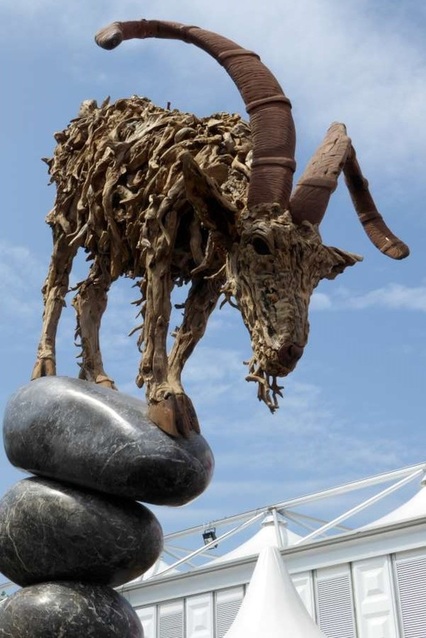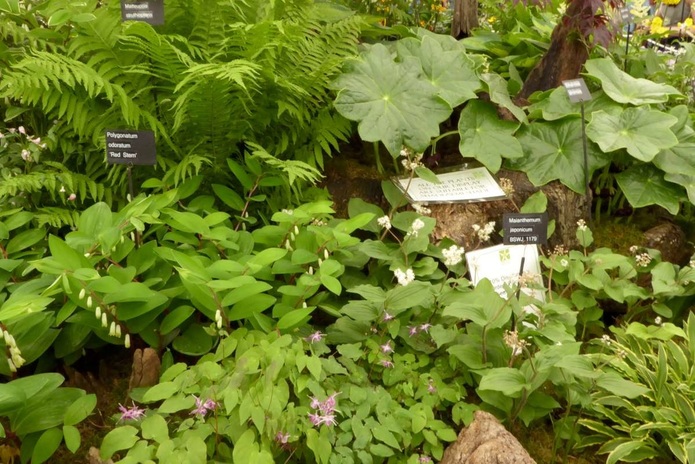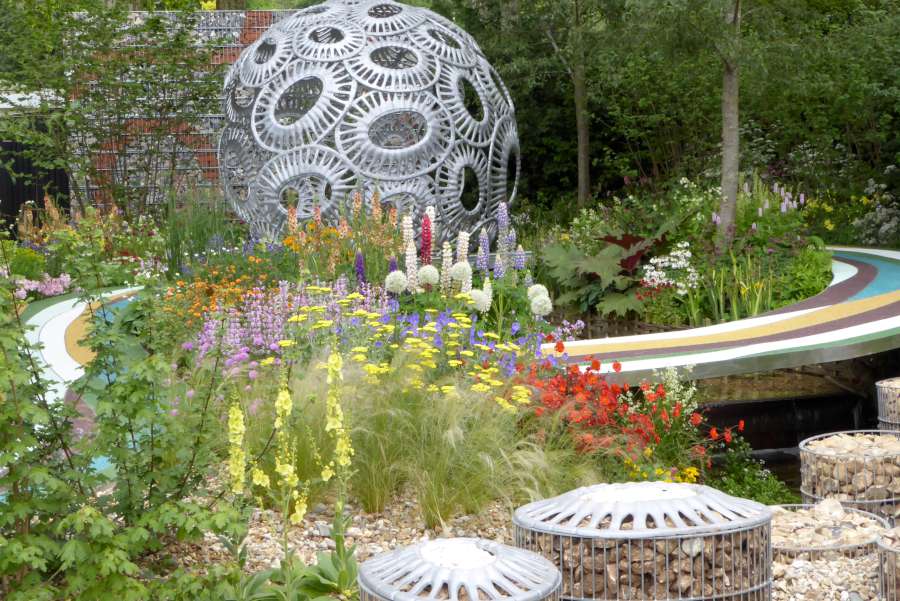Coverage of the Chelsea Flower Show is extensive - both in traditional media and on the web. The Frustrated Gardener, for instance, has given such a thorough account of the show gardens on his blog, along with great pictures, that there seems little to add. Except, of course, a subjective take on the gardens which by definition will vary from person to person. But what is the overall impression of someone who's read a lot about the show yet has never seen TV coverage or been herself before? And who's never seen any of the other Royal Horticultural Society shows, such as Hampton Court Palace or Tatton Park, either?
I have been in this situation myself not that long ago, so I remember very well. Any media coverage I'd come across - exclusively print media, I have to admit - focussed on the design of the gardens and new plants or products introduced to the horticultural world. That's not surprising since this is the "new" bit each year, the part that keeps it fresh and exciting to those familiar with the show. But it only tells part of the story. Consequently, the biggest shock is how large the site is and how much there is to see. Especially how much "else".
On top, however, there is any amount of trinkets and products such as stationary, toiletries, mugs and flower-printed umbrellas. Twisted metal sticks with all sorts of ornamental finials seemed to be the most in-demand thing, lots of visitors wandering around with these "beautifying wands". But perhaps these were just the most visible: slim and light enough not to need delivery but too big to disappear in bags. Despite wandering around the show from shortly after opening time at 8am until they kicked us out at 8pm, we didn't manage to give more than a passing glance to most stalls and stands. Not that we regretted much: as we finally left the grounds, my mother remarked: "Incredible to see what's out there and remarkable how little of it you actually need."
Perhaps it was thus decades ago. There are echoes of it to be found, most notably in the big bunches (or bouquets) of a single cultivar of chrysanthemum or lilies in front of a plain coloured background. But for most it is much more "showbiz" than that. In essence, there are dozens of miniature gardens inside the marquee. Either "proper" little gardens, often built by colleges or institutions, or arrangements of plants that show them in a garden-like combination. Being a shade garden lover I especially swooned and cooed over stalls such as Harveys Garden Plants which weave a rich tapestry of the most covetable woodland gems with an admirable eye for contrasting forms, textures and patterns. It's a style pioneered by Beth Chatto when she exhibited all those years ago, if what I've read in books is correct.
At some point during the day, however, your mind starts shutting down: too much, can't compute more...
There was but a single display we both heartily disliked and that consisted of huge, blowsy delphiniums in all shades of blue. In front, there were tuberous begonias with flowers in yellow, orange and salmon the size of dinner plates. "Gaudy" is an understatement...
In contrast, the perhaps most beautiful nursery stand of all likewise concentrated on a very narrow selection of plants: In fact, Ashwood Nursery showed nothing but hepaticas but it couldn't have been more different if it tried. Nursery owner John Massey seems to have enchanted everyone with these diminutive but exquisite little plants since he received not just a Gold Medal but the Diamond Jubilee Award for Best Exhibit in the Great Pavilion - though we only found out later. More than justified, we thought, even if the fact that it was the first time ever hepaticas have been shown as a single exhibit at Chelsea may have helped.
And what did we make of this year's show gardens? There was one we really didn't like, and that was the recreation of a bit of Provence for sponsor L'Occitane. It was a very skilful recreation of a sparse, dry Mediterranean landscape, amazingly well done, but a garden it was not. Unless, of course, you count any plot that's been fenced in in the manner of the original meaning of hortus. From the main show gardens, we weren't convinced by the Cloudy Bay Garden either: too fluffy, somehow, due to all the grasses. Having noticed there were many unopened Agapanthus buds, however, I wonder if the effect had been different if these were in full bloom? Perhaps the idea was to have many big blue or white flower spheres as visual counterpoints dotted throughout, and the long chilly weather simply
prevented this?
Likewise, the Watahan East & West Garden didn't do it for us: the mixture seemed too odd or disjointed, neither fish nor fowl. And we thought it a real pity that the Brewin Dolphin Garden - Forever Freefolk was spoiled not just by what looked like a pavilion and stepping stones in the "dry chalk stream" made of wheel covers (something that at least fitted its message) but, much worse, by what I couldn't help but think of as a runner's track in Olympic colours - a running track that wound its way through the entire site, visually overpowering even the brightly coloured flowers, and felt totally out of place there.
Then again, quite likely you'll get used to it over the years, leave out most of it and concentrate on your favourite bits - and perhaps just go for a few hours in the afternoon or first thing in the morning when it is slightly less overrun. Despite having a few shows under my (visitor's) belt, I'm not there yet myself. So I guess I have to keep coming back...










 RSS Feed
RSS Feed